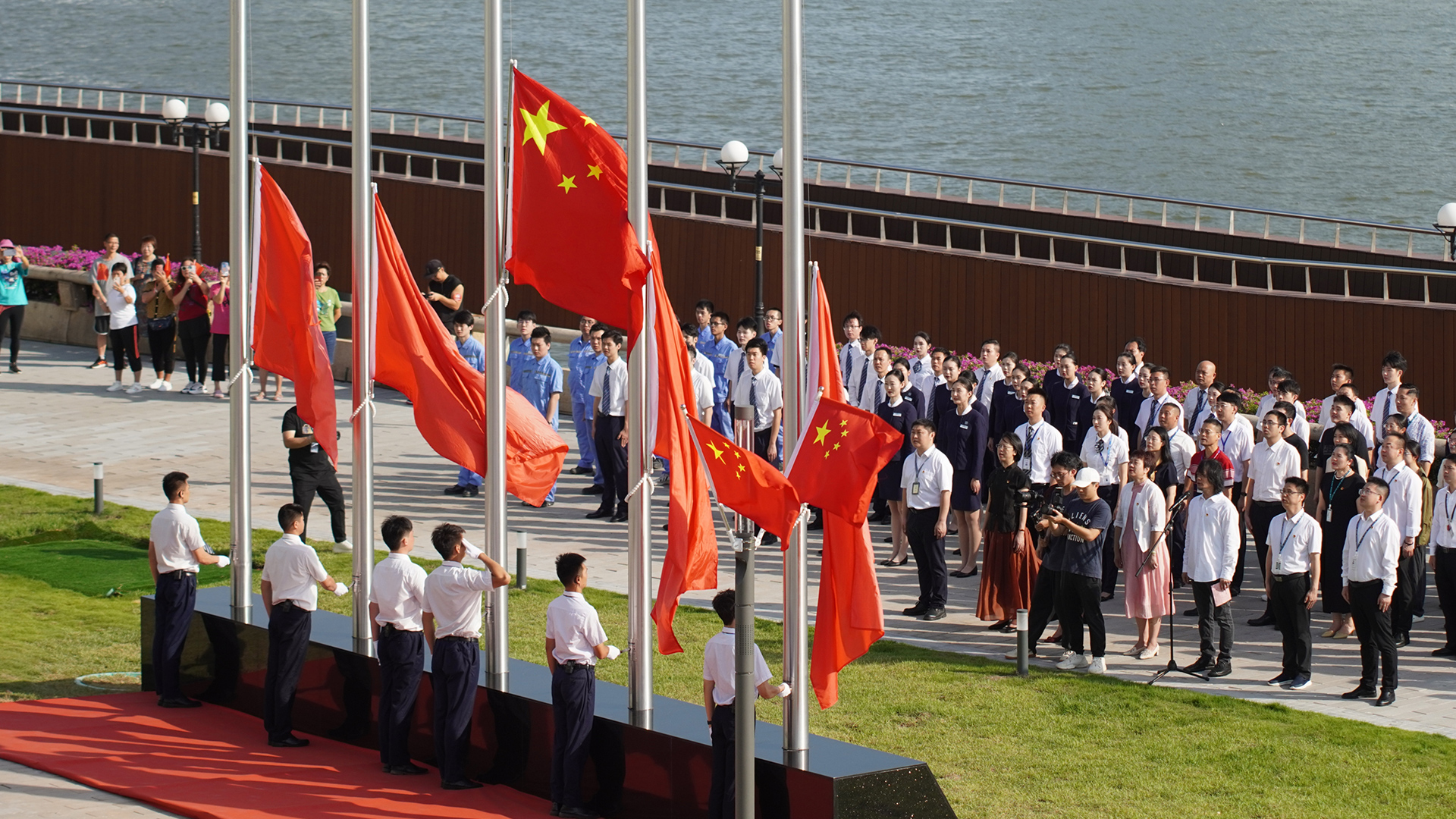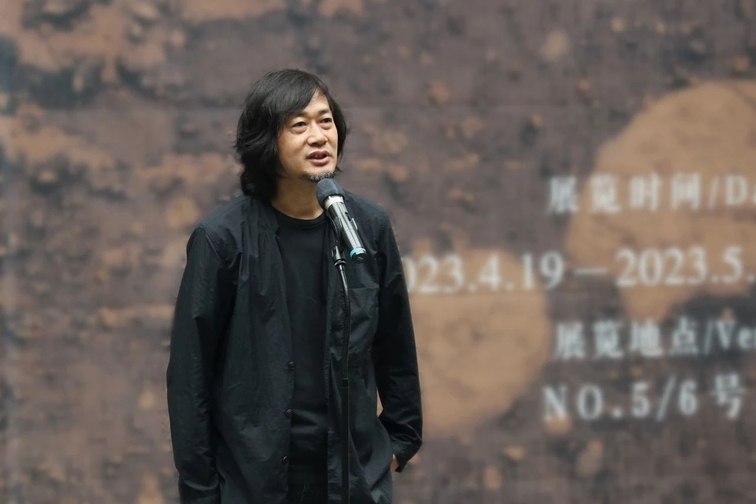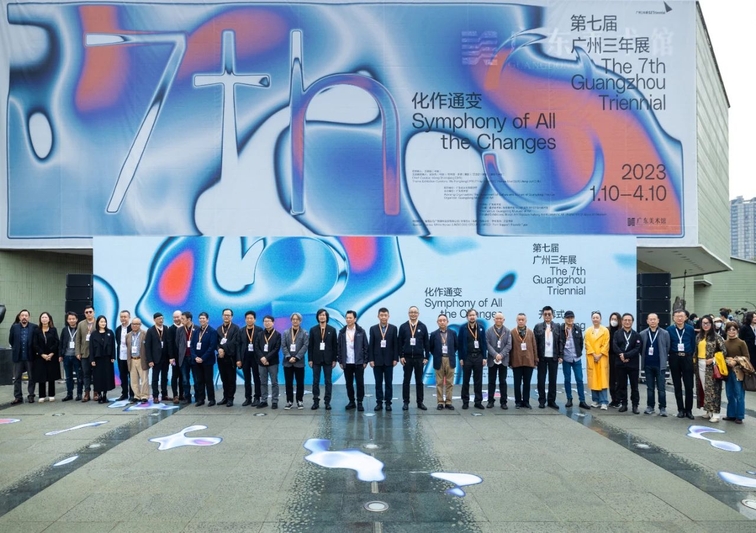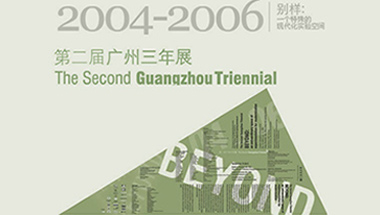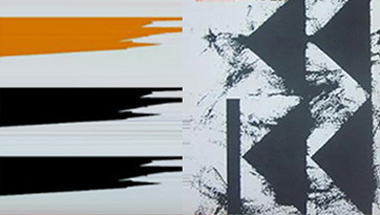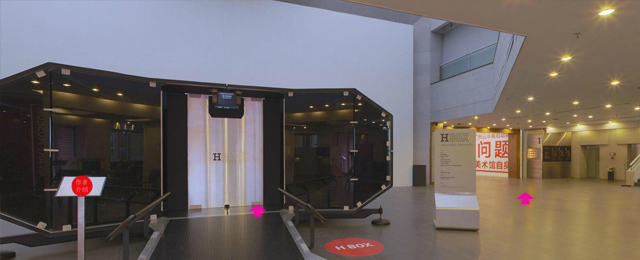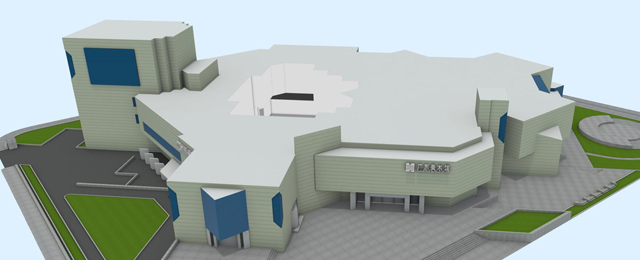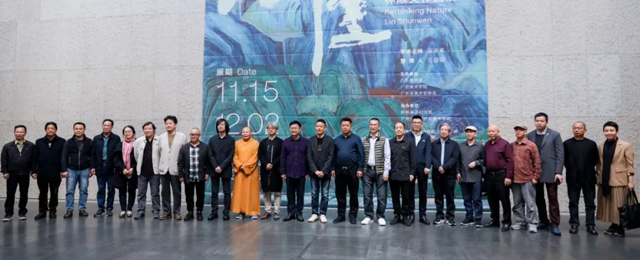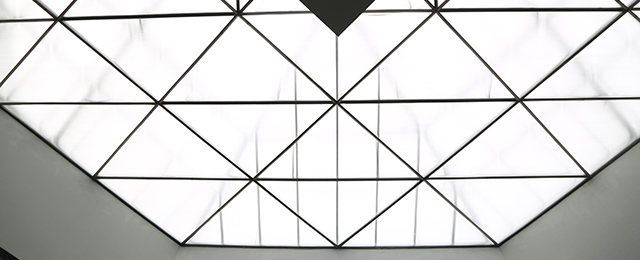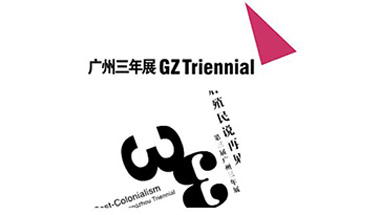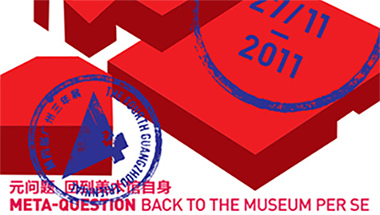前言
录入时间: 2012-05-11
广东美术馆前言
马克•吕布与广东美术馆结缘始于2005年广州国际摄影双年展,在“蓬皮杜中心摄影藏品展”单元,观众流连于马克的参展作品《埃菲尔铁塔上的油漆工》之前。随后,美术馆的同事怀着崇敬的心情前往法国巴黎马克的工作室拜访了这位曾担任玛格南图片社主席,毕生追求自由和独立精神,被誉为对中国的纪实摄影有深远影响,用自己的风格表明了摄影的态度,用自己的行动表达了对中国摄影师关怀的传奇式摄影师。广东美术馆荣幸地在马克先生即将步入90高龄之际举办他的回顾展。
在他一生的摄影生涯中,马克坚持只用莱卡M6小相机和35毫米的镜头,而且坚持抓拍。他认为,在被拍对象和光线都呈现自然的状态下,细微的生活细节才能发现重大而深远的内蕴。因此,人文关怀和热情是他的作品最基本的元素,他的镜头总是对准平凡朴实的场面,在不经意间轻轻地按动手中的快门,把直觉的瞬间定格于永恒。
马克对中国表现出强烈的喜爱。他1957年第一次踏上中国的土地,之后的50多年之间无数次往返中国,他关注时代的变迁给中国人和社会带来的改变,记录了文化差异触碰心灵的珍贵照片使我们能够从另一个角度了解我们的过去和现在。
本次展览展出137件马克的作品和25件中国摄影师拍摄马克的作品。这些作品创作年代横跨50年,是马克和助手精心挑选出来的,其中有些是未曾公开发表过的作品。
本次展览的成功举办离不开法国驻华文化教育局、法国驻广州总领事馆、华为技术有限公司和策展人尚陆先生的大力支持,在此向他们深表谢意!
广东美术馆
2012年5月
法国驻广州领事馆前言
现年89岁的马克.吕布,是一个来自法国的当代世界历史重要见证人。他的视线触及过全世界几乎每一个角落,而且常常亲身经历一些戏剧性时刻:越南战争、非洲独立战争、学生运动…… 他用镜头表现形形色色的人物和风景,向我们诉说背后的故事,让记忆重新涌现:本次回顾展也正着墨于此。作为一个摄影记者,他成为了著名的马格南图片社成员,在那里他遇见了著名战地摄影记者罗伯特.卡帕,并最终带领马格南图片社走过了1976-1979三年的时间。
马克吕布如其所愿走遍世界各地,游历达三十数年之久。期间出版无数著作,讲述他心目中最有分量的那些故事。其中,《天都黄山》,《吴哥,佛教中的宁静》等等著作中,尤其令我深受震动的,要数1996年出版的《行摄中国四十年》。
中国确实是他最钟爱的目的地之一,从1957年至今,他到访中国逾二十次。尤其值得一提的是:他的第一幅摄影作品,正是在香港往广州的火车上所拍,“一位优雅而有尊严的农妇”。他的足迹遍布中国,通过镜头捕捉各种人物瞬间,下至普通百姓,上至国家领导,如毛泽东和周恩来。马克.吕布也是少数几个外国人当中之一,曾见证了中国南方的崛起 —— 这块土地被晚年的邓小平选中,成为中国经济改革的试验田和经济腾飞火车头。看看他当时所拍下的照片和今日深圳之对比,又是多么奇妙!
他的作品在全球各地展览,而我们倍感自豪和荣幸的是,今天这些杰作得以在广东美术馆展出。
在此谨真诚地感谢马克 吕布,感谢他在中国的所有朋友,促成了这次展览的成功举办。
白屿淞
法国驻广州总领事
Foreword II
Marc Riboud, now aged 89, has been a major French witness of the modern world history. His eyes have seen most of the planet, often at dramatic times: Vietnam War, fights for independence in Africa, students’ movements... His cameras have captured characters and landscapes that tell us stories and revive memories: this retrospective is all about them. As a photo-journalist, he became a member of the famous Magnum agency, where he met Robert Capa; he eventually headed Magnum from 1976 to 1979.
It's now more than 30 years that Marc Riboud travels the world as he wishes. Numerous books have been published that tell the stories he believes to be the most important for him. Among them, Huangshan, Capital of Heaven and Angkor, the serenity of Buddhism; I was myself stunned by 40 years of photography in China, published in 1996.
China is indeed one of his favourite destinations, with more than 20 visits since 1957. And let's acknowledge that his very First photograph there was taken in a train from Hong Kong to Guangzhou; "a woman peasant sitting with grace and dignity". He went around the country and seized moments with humble people as well as leaders of China, Mao Zedong and Zhou Enlai among others. Marc Riboud is also one of the only Foreigners who have seen the arising of South China, chosen by the late Deng Xiaoping to become the laboratory of the reform and the engine of the Chinese economy. How amazing to see the pictures he then took of Shenzhen and compare them to what the town is now!
His work is shown all around the world and we feel today proud and privileged to have his pictures shown at the Guangdong Museum of Art.
I am therefore very grateful to Mark Riboud and all his friends in China who made this exhibition possible.
Bruno
Bisson
Consul General of France in Guangzhou
Foreword I
The first contact between the Guangdong Museum of Art (GDMoA) and Marc Riboud traced back to the First Guangzhou Photo Biennial in 2005. In the section of "Photo Collection from the Centre Pompidou" of the Biennial, visitors were deeply impressed by Marc's masterpiece Eiffel Tower's Painter. Later, some of the staff from the Museum went to visit him at his studio in Paris with great honor and had an opportunity to further aquaint with this photographer, who was the former president of the Magnum Photos and has been pursuing for freedom and independence all his life. He has exerted a far-reaching influence on Chinese documentary photography, inspired and helped many Chinese photographers, and thus was considered a legendary photographer. His style of photographing demonstrate his own attitude. The Guangdong Museum of Art is honored to hold his Retrospective on the occasion of his 90th birthday.
He merely uses a Leica M6 camera and a 35mm lens to shoot. He insists on snapshots since he believes that only if subjects and lights are exposed in a natural state can subtle details in life reveal their great and profound meaning. Humanistic concern and enthusiasm are essentials in his works. His lens always focuses on the common and simple scenes. While the shutter is clicked, an instinctive moment becomes eternity.
Marc has strong affection for China. The first time he came to China was in 1957 and he revisited this country many times in the last fifty years. He is concerned with the great changes occurred to the Chinese people and her society brought by the historical movements. Those precious pictures recording moments which stroke his heart caused by cultural differences allows us to know about our past and present in another point of view.
Around 137 pieces of Marc's works spanning 50 years and 25 photos on Marc by Chinese photographers are displayed in the exhibition. All of them are delaborately selected by Marc and his assistants, and some have not yet been published.
The exhibition would not be made possible without the support of the Institut Français de Chine, the Consulate General of France in Guangzhou, Huawei Technologies and the curator Jean Loh. We would like to express our gratitude to them.
Guangdong Museum of
Art
May 2012
策展人尚陆序言-中文
马克•吕布——摄影的王子先生
马克•吕布是一位和善优雅的绅士,正如他所居住的街名,也是这般优雅。每次去拜访马克,不管是独自去,或是带了中国摄影师朋友一起,我总是很喜欢漫步在这个拉丁区的上坡小径,那条有名的“王子先生街” 在巴黎五月风暴中曾被布满了大学生筑起的街垒路障。我愉快地琢磨着这两个名字的巧合,同时也期待我们之间即将展开的对话所带来的乐趣。马克对某些事业怀有的正义感,以及对自由和独立的一种倔强又崇高的热爱之情,让我每次都会对自己说:我在这里,是正要去拜访一位摄影的王子先生。
早自他第一张成功的摄影作品——《艾菲尔铁塔的油漆工》开始,马克似乎就已将他的摄影定义为一种乐趣,一种靠观看,漫无目的地游走,凭直觉来捕捉世界瞬间的乐趣。他常说,他绝不是哲学家或社会学家,他只是观察事物的表面。然而,他看似以如此流于表面的处世方式自居,这却并未阻碍他拍摄出一系列极具震撼力的作品来挑战欣赏者的观察和思考能力,例如他以报道方式拍摄出的非洲、北越、伊朗革命、阿尔及利亚的独立进程,以及美国的反战运动。是的,马克•吕布的艺术在这朵小花中表现得再为明显不过了——一朵由一位年轻姑娘双手捧着,想要递给荷枪实弹的士兵们的小花。这是一个神奇与诗意并存,充满了和平与爱的气息的时刻,存在于可能激发潜在暴力的一次极具戏剧性的对抗之间:这是马克的直觉性的一瞬间。
在近60年的摄影生涯中,是他在中国的摄影真正构成了他巨作的主体。沿着罗伯特•卡帕(1938年)和亨利•卡蒂埃-布列松(1949年)的足迹,从1957年到2010年,马克•吕布到中国游览的次数近22次,而在20世纪80年代和90年代间,他更是如同每年的朝圣一样来去频繁。对于这个国家,他拍得比任何其他国际摄影师都多,而他既不会讲汉语,也没有成为汉学家。马克一直坚持一个局外人的立场,以持有别开生面的视角,准备好迎接意外的惊喜。他最喜欢的主题——黄山,是被喻为马克对中国的迷恋的凸显标志。有人会以为拍摄风景很容易,“不是那样,”他会说,“黄山的风景不断迅速地变化。由于雾、云、光线一刻不停的移动,你必须保持高度警觉,追逐那些光影。到最后虽然人都累趴下了,但还是心满意足,非常高兴。”这番描述完美地诠释了他这么多年来回穿越所捕捉下的不同风景,描绘了中国广袤大地不断变化的不同面貌,从东北的草原到江南的鱼米之乡,从鞍山工业区到深圳新兴城市,从东部沿海地区到喜马拉雅山脉,马克一直在追寻属于中国和中国人民的光和影,组合出一个经历了五十年发展的国家的一幅画像,令人叹为观止而又史无前例。
很显然,马克并不仅是通过他的镜头来看中国。多年以来,他结交了不少朋友,有些是摄影师,有些则不是。尽管他很幸运,有布列松和卡帕作为他的导师,但他还是尽力找到自己的方式对中国年轻的摄影师来延续这一“代代相传”的传统。
这次在中国举办的回顾展是一次独一无二的良机,从中人们可以测算出一个摄影巨匠的步伐和旅程;对每个人来说,这也是一个难得的机会,人们可以领悟到他对世界和中国所拥有的视野的重要性(本次回顾展中50%的展出作品都是有关中国的照片),而他,是一位将每天的摄影工作视为音乐家的日常练习般的大师。
这也是一次为我们眼睛打造的培训课程,是关于“看”的一堂课。事实上,马克从他最喜欢的照片中选出一张作为这次展览主要畫面,这张照片中有属于一个神秘的伯拉第斯拉瓦男人的被闪电击中的一双眼睛,来自一幅巨型户外广告。这张综合了结构感、类几何感以及对于不同寻常的优雅——甚至是美的直觉性感知的作品, 表现了这位摄影王子古典和现代感并存的特征,这也是来自马克内心的呼唤,邀请我们学会“看”的艺术。
向您致谢,马克•吕布先生!
尚陆
策展人 / 马克挚友
2012年4月
策展人尚陆序言-英文
Marc Riboud - Monsieur Le Prince de la
Photographie
Marc Riboud is a gentleman as gracious as the name of the street where he lives. When I pay Marc a visit, alone or in the company of Chinese photographer friends, I always enjoy the uphill walk in this Latin Quarter, siege of the famous barricades of May 1968 along the “Rue Monsieur Le Prince”, thinking with delight at the coincidence of the two names and relishing the pleasure of our upcoming conversation. And because of Marc’s righteousness for certain causes and of his unbending and noble love of freedom and independence, I say to myself each time: here I am, about to visit Monsieur Le Prince de la photographie.
From as early as his first successful great picture, The Painter of the Eiffel Tower, Marc seemed to have defined his photography as “the pleasure to see”, to wander aimlessly and to capture the world by instinct. He would say that he is no philosopher or sociologist and that he simply looks at the surface of things. Yet this apparent pretense to a certain lightness of being did not stop him from producing a series of powerful pictures that challenge the viewer to observe and to think; such as his reportages on Africa, North Vietnam, on the Iranian revolution, the Algerian independence, and the anti-war campaign in the USA. Yes, Marc Riboud’s art cannot be more explicit as here in this little flower held out in both hands by a young girl to the gun-toting soldiers; a moment of magic and poetry, of peace and love, in the midst of a most dramatic and potentially violent confrontation: that was Marc’s “instinctive moment”.
Over nearly 60 years of making pictures, it is his China photography that really makes up his seminal body of work. Following in the footsteps of Robert Capa (1938) and Henri Cartier-Bresson (1949), between 1957 to 2010, Marc Riboud has visited China some 22 times, achieving a frequency of quasi annual pilgrimages during the 1980’s and the 1990’s. This is the country he has photographed more than any other world photographer without speaking the language, or becoming a sinologist. Marc has always insisted on remaining an outsider in order to keep a fresh eye and be “ready for surprises”. His favorite subject, the Yellow Mountain, stands out as the metaphor of Marc’s fascination with China. “I thought it would have been easy to photograph landscape.” “Not so.” He would say. “The landscape on Huangshan keeps changing so fast. With the haze, the clouds and the lights constantly on the move, you have to stay alert, chasing after the shades. In the end it is really tiring but so satisfying, and so gratifying.” This description fits perfectly with the different and changing faces of the vast land of China he has crisscrossed and captured. From the Northeast steppe to the Southern rice fields, from the Anshan’s industrial zone to Shenzhen’s boom town, from the East coast to the Himalaya chains. Marc has always been chasing after the lights and the shades of China and its people, producing an impressive and unprecedented composite portrait of a country on a 50-year rise.
Obviously Marc does not only look at China through his lenses. He has over the years made many friends, photographers or not. As much as he was fortunate to have had such mentors as Cartier-Bresson and Capa, he has tried in his way to perpetuate this tradition of “passeur”, especially in his long standing relationship with some of the Chinese photographers he befriended.
This China retrospective is a unique opportunity to measure out the steps and the journey of a giant in photography, a chance for everyone to grasp the importance of a vision of the world and of China (over 50% of the prints of this retrospective are about China) by a master who equates his picture taking to the daily practice of a musician.
It is also a training course for our eyes, a lesson in “seeing”. The fact that Marc wanted one of his favorite pictures to feature as the key visual of this exhibition, specifically the one with the lightning struck eyes of an enigmatic Bratislava man from an outdoor advertisement, is an illustration of the combination of structural, quasi geometric sensibility and an instinctive perception of unusual grace - even beauty which characterizes the classicism and the modernity of this Prince of photography, and represents the best heartfelt invite from Marc for us to learn to see.
Merci, Monsieur Marc Riboud!
Jean Loh
Curator
April 2012
艺术家序言-中文
“视觉是心灵的一座乐园”
有传言说我一生都不停地去中国又回中国。这不完全准确,但我确实无法掩饰对中国的喜爱:我喜欢回去重游那些自然风光,那些尤其是对我来说意义非凡的城市;我喜欢和我的中国摄影师朋友们重逢。如果把我所有的行程加起来,我可能会发现,从1957年第一次来到中国开始,我在中国的旅行占据了一生中的两到三年。在旅途中,我能够看到毛泽东主义以及后来中国内部的资本主义是如何使中国转型的。我也力图寻找隐藏在这些变化背后的、一直存在着的历史脉络,寻找正如戴高乐的那句名言所说的——“比历史本身还要古老”的文明所蕴含的永恒。
然而,尽管中国在我心中占有特殊的位置,这次展览也不仅仅表现了我对中国的喜爱!我曾屡次漫游东方和远东地区,在印度停留过一年,也在阿尔及利亚和非洲很多国家宣告独立之时摄下过当地的很多照片。我喜欢离家出走,摆脱一切束缚,尽可能近地去观察改变了我们这个时代人们生活的一些事件。但这种观察不仅仅是出于好奇,更是我看到了那些启发我灵感的东西后被激发出的热情。我喜爱在混沌中寻求井然之时,那些视觉之上的惊喜和转瞬即逝的快乐。我喜爱某些脸庞以及躯体、姿态或是本性所表现出的和谐之美。13世纪一位权威的眼科教皇曾说:“视觉是心灵的一座乐园。”他说得很对,我也从来不为寻求美而感到疲惫。只要有人了解如何去发现美,它便无处不在:它在我那都兰的花园里,在雪中的紫禁城内,或是在斋浦尔的广场上。你只要睁大双眼便已足够。
马克•吕布
2010年3月巴黎
艺术家序言-英文
"To see is the paradise of the soul"
The rumor says that I have spent my life going and returning to China. This is not quite correct but I cannot hide that I love to return often to revisit the landscapes and especially the cities that are dear to me, to see again my friends the Chinese photographers. If I added up all my travels, I might find out that I had spent two to three years of my life there since my first trip in 1957. During these visits I could see how Maoism and later capitalism in China have successively transformed China and I also tried to find, hidden behind these changes, the ever present thread of tradition and the permanence of this civilization "older than history itself" according to de Gaulle’s famous formula.
Yet this exhibition also shows that I did not love China alone even though it
has a special place in my heart! I did a lot of wanderings in the East and the
Far East, I spent one year in India, and I photographed many countries in Africa
and Algeria, at the time of their independence.
I like to run away, leaving
my family, cast off and go to see as closely as possible the events that
transform the lives of the peoples of my era.
But more than
curiosity, without any doubt it is the passion to watch that sets me in motion.
I like the visual surprises and the fleeting happiness in finding an order in
chaos. I like the harmony of certain faces as well as that of the bodies,
gestures or nature. "To see is the paradise of the soul" said an oculist pope in
the 13th century. He was right and I never tire of looking out for beauty. It is
everywhere for those who know how to see it, in my garden in Touraine, in the
Forbidden City in the snow, or on a square in Jaipur. You only need to keep your
eyes wide open.
Marc Riboud
Paris, March 2010
开放时间:每周二至周日9:00-17:00(逢周一闭馆)
每日16:30停止入场
地址:广东省广州市越秀区二沙岛烟雨路38号
咨询电话:020-87351468
预约观展:
-
金秋十月第一天,白鹅潭大湾区艺术中心以一场庄重而盛大的升国旗仪式,庆祝中...

